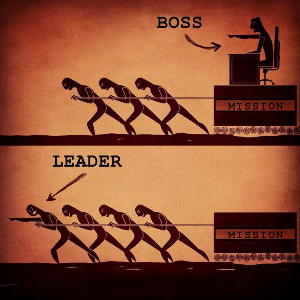![]()
There is a growing incidence of toxic leadership in organisations across the world. This is clear from anecdotal evidence as well as research which suggests that one out of every five leaders is toxic. My own research shows that closer to three out of every ten leaders are toxic.
This cancer of toxicity threatens the well being of both individuals and organisations. It also affects the performance of a society and country. That’s why there is a pressing need for leaders to understand the nature, dynamics and evolution of toxic leadership and organisations.
The word “toxic” comes from the German “toxikon” which means “arrow poison”. In a literal sense, the term in its original form thus means to kill (poison) in a targeted way (arrow). Toxic organisations and leaders therefore are those who deliberately destroy the fabric of the institution.
What makes a toxic leader?
Toxic leadership represents the “dark” side of leadership. It affects individuals as well as organisations.
In the case of individuals toxic leadership refers to ongoing, deliberate, intentional actions – the “arrow” – by a leader to undermine the sense of dignity, self-worth and efficacy of an individual – the “poison”. This results in exploitative, destructive, devaluing and demeaning work experiences. These destructive actions may be physical, psychosocial or even spiritual when they diminish a person’s meaning and purpose.
A toxic organisation is one that erodes, disables and destroys the physiological, psychosocial and spiritual well being of the people who work in it in permanent and deliberate ways. In other words, an organisation becomes metaphorically a “poison pill” for employees.
Workplace bullying is similar to toxic leadership, but is just one form of it. Bullying is more centred on individual, one-on-one, physical or emotional abuse by any one individual, including a leader, on another person.
In contrast to toxic leadership, healthy, authentic leadership nurtures and affirms the dignity, worth and efficacy of an individual. It creates enabling, empowering and meaningful work experiences.
And a healthy, authentic organisation is one that nurtures and grows the physiological, psychosocial and spiritual well being of its organisational members.
Can toxic leaders be competent?
Leadership toxicity and incompetence are not directly related. Both competent – getting the desired results – and incompetent leadership can be toxic.
If a narrower definition of competence is used – only focusing on technical and professional competencies – a toxic leader may still be seen as competent because they are “delivering the goods”. This is particularly true if a short term view is taken. But over the longer term their short term success is unsustainable. This is because they are destroying their teams, departments or organisations in the process.
If a comprehensive, long term view is taken toxic leaders are incompetent because they are not competent across all domains of a well-rounded leader. Taking a comprehensive view, leadership qualities include personal attributes, technical and professional competencies, values and attitudes, and conduct.
I believe that toxic leaders, regardless of their level of technical and professional competence, are incompetent. After all, competent leadership is all about getting things done with people.
Typical toxic leaders
Five typical toxic leaders exist:
- The Cold Fish: the ends justifies the means. So any decision and action is justifiable in terms of the results desired.
- The Snake: the world serves me in the endeavour to satisfy my personal needs like greed, status and power.
- Glory Seeker: personal glory and public visibility at any cost, regardless of whether I have made any real and meaningful contribution.
- Puppet Master: absolute, centralised control over everything and anyone, under all circumstances.
- Monarch: ruling the organisation as if it is my kingdom. All of its assets are available for my personal use.
The more prolific these toxic leaders are in an organisation, the more toxic the organisation. The table below profiles these toxic leaders.

Typical toxic organisations
The typical manifestations of a toxic organisation resulting from toxic leadership are:
- Negative emotional moods and mood swings: anger, despair, despondency, frustration, pessimism and aggression.
- Unproductive and meaningless work.
- Destructive and counterproductive conduct.
- Employee physical and emotional disengagement and withdrawal such as absenteeism, lack of contribution, and turnover.
- Unethical, deviant conduct: theft, fraud and sabotage.
- Poor well-being and health.
- Low (team) morale and work satisfaction.
- Organisational dis-identification and low organisational commitment.
- General life dissatisfaction.
But organisations can be toxic in their own right through the organisational culture they have. Organisational culture refers to shared ways of seeing, interpreting and acting upon the world that becomes ingrained in an organisation’s DNA. It’s the glue holding it together and provides an organisation with a way of looking at and relating to the world.
When toxic patterns become ingrained into the DNA of an organisation the following patterns emerge:
- Paranoid: the defensive, afraid, suspicious, trusting no-one or nobody organisation.
- Compulsive: the over-planned and over-programmed organisation.
- Hyperactive: the impulsive, unfocused organisation, acting like an adolescent.
- Deflated: the energyless, depressed and impotent organisation.
- Delusional: the reality estranged, make-believe organisation, living in a world of its own.
- Conscienceless: the unethical, amoral organisation.
There appears to be a growing incidence of the cancer of toxic leadership and organisations. This is in no uncertain terms endangering the well being of organisational members, compromising future sustainable organisational, community and societal performance and success, as well as the very continued existence of them.
This article was written by Theo Veldsman of the University of Johannesburg and was originally published on The Conversation Africa. It is republished here with the kind permission of The Conversation Africa.














